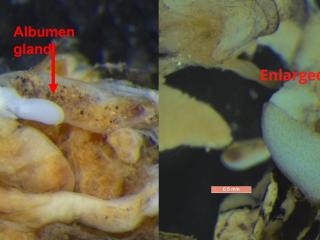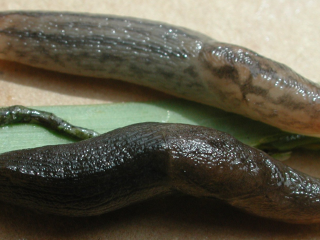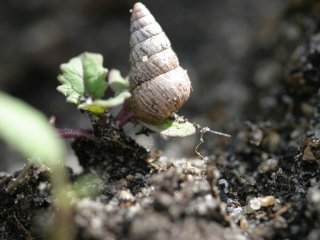What to expect from mollusc pests after a hot dry summer
A hot, dry summer doesn’t mean that there won’t be any slug or snail activity in paddocks this season. Don’t get caught out.
Slugs
Paddocks that have a history of slug activity and were not baited in 2021 are likely to have slugs present.
Reticulated slugs over summer, hide under surface refuges such as rocks, whereas the black keeled slugs will burrow underground. Both species of slugs will survive hot summers, but black keeled slugs will also survive in paddocks if burning occurred whilst slugs had burrowed underground.
Survey your paddocks and find out where your slugs are to target baits. The best time to survey for slugs is nine hours after sunset when temperatures are at 7oC and humidity is between 80-90%. As getting these conditions can be hard, create refuges for slugs by placing traps (such as wet hessian sacks) in paddocks, which can be checked the following morning. Or run a line of baits out one day and check for any dead slugs the following day.
One slug per square metre can cause extensive damage to germinating canola.
A well-timed baiting application can control slugs. Baiting after seeding can protect seedling crops from slug feeding damage.
Small conical snails
- South Stirlings

Recent dissections of small pointed (conical) snails from the South Stirlings have revealed that the albumen gland in snails collected from early March to late March has increased in size. Green plant material was also found in their guts indicating snails are actively feeding.
The albumen gland supplies the nutritive fluid required for egg production. This increase in gland size suggests that most of the snail population is expected to be laying eggs by mid-April.
There are three snail species that are pests of WA broadacre crops. For more information on how to diagnose snails refer to DPIRD’s Diagnosing snails in crops.
Eggs laid by snails this season will contribute to snail numbers next year.
Snail numbers should be monitored to determine if they exceed DPIRD’s suggested threshold numbers and if there is a need to carry out management methods.
Snails are usually found on stumps, fencelines and under stubbles, depending on the species of snail. Camera monitoring has shown that the best time to check is early in the morning, from 6am to 8am, when there is moisture on plants and stubble.
A good way to determine snail numbers on open ground is to use a 32x32cm square quadrant and count all of the live snails in it. This is an area of 10% of a square metre so multiplying by 10 will give an estimate of snails per square metre.
Trials conducted by Stirlings to Coast farmers has shown small conical snails are difficult to control with techniques such as cabling, speed tillering, stubble crunching that control round snails (white Italian, vineyard snail) are not effective on small conical snails. For more information refer to the Stirlings to Coast Farmers Trials Review Booklet 2020.
After sowing, baiting is the only control method for snails. Baiting before the crop emerges is more effective as snails randomly encounter baits. The less green plant material is present in the paddock the more likely it is that snails will encounter a bait.
Timing of baiting is important, to coincide with when snails are actively moving and feeding.
Snails can become active after a rain event of five mm or more. Rain has fallen in large parts of southern WA. Snails can also be actively moving even if there has not been rainfall during the day. For more information see DPIRD’s Time snail baiting to coincide with maximum snail movement and before snails lay eggs page.
An even spread of baits across paddocks increases the chance that slugs and snails will feed on them, reducing the need for re-baiting. DPIRD’s SnapBait app assists with calibrating bait spreaders. If unsure that snails are actively feeding consider baiting small patches and observe for any dead snails the day after.
It is also recommended that growers budget for more than one bait application. As a single application of baits may not be sufficient to control small conical snails. For more baiting information refer to the Stirlings to Coast Farmers Effective baiting options for the control of conical snails in the Albany port zone final technical report.
Research has also found that applying granular lime to a paddock with small conical snails increases shell strength and increase their fertility. Growers need to budget for baiting paddocks after liming has occurred. For more information see the GRDC Update Paper Determining the effect of lime on small pointed (conical) snail fecundity and shell strength.
For more information on slug and snail control visit:
- DPIRD’s Identification and control of pest slugs and snails for broadacre crops in WA page
- DPIRD’s Snail and slug control page
- DPIRD’s Managing snails in broadacre crops podcast
- GRDC’s Bash’Em Burn’Em Bait’Em: Integrated snail management in crops and pastures publication
- GRDC’s Autumn is the time to bait snails media release
- GRDC’s Snail baiting as part of an integrated pest management strategy video.
For more information contact Research scientist Svetlana Micic, Albany on +61 (0)8 9892 8591.
Article authors: Cindy Webster (DPIRD Narrogin) and Svetlana Micic (DPIRD Albany).


